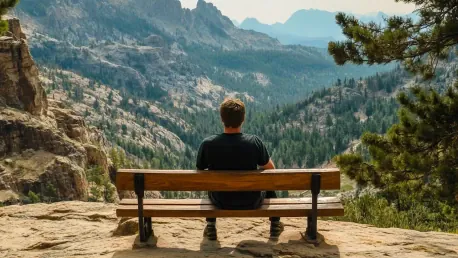National parks have long been cherished for their natural beauty and recreational opportunities, drawing millions of visitors each year. However, beyond their scenic landscapes, these parks play a crucial role in bolstering local economies. In 2023, an impressive 325 million visitors flocked to national parks across the United States, leading to substantial economic activity and injecting approximately $26.4 billion into the surrounding regions. Towns and counties within a 60-mile radius of park boundaries, known as gateway regions, have experienced significant economic benefits motivated by visitor expenditures on various services, including lodging, restaurants, gas, recreation, retail, groceries, and camping.
Economic Contributions of Popular National Parks
Leading Tourist Spending in Iconic Parks
Among the plethora of national parks, the Great Smoky Mountains National Park emerged as the leader in visitor spending for 2023, generating a remarkable $2.2 billion. This staggering figure reflects the park’s popularity and its extensive array of attractions. Similarly, the Golden Gate National Recreation Area and the Blue Ridge Parkway each witnessed over $1 billion in visitor spending, underscoring the massive appeal of these destinations. The high level of expenditure translates into significant economic gains for nearby communities, particularly in categories where visitors tend to spend the most money.
Lodging and restaurants stand out as the top beneficiaries, with national park visitors spending an estimated $9.9 billion on accommodations alone. This influx of revenue has provided a lifeline to numerous local hotels, motels, bed and breakfasts, and vacation rentals. Additionally, dining establishments have thrived, supported by visitors who spend generously on meals, accounting for 19.5% of total visitor spending. Beyond accommodations and dining, lesser but still substantial amounts were allocated to other categories, including gas, recreation activities, retail purchases, groceries, and camping supplies, collectively contributing to an economic ripple effect in gateway regions.
Categories Fueling Economic Gains
Delving further into visitor spending, lodging and restaurants emerge as the most prominent sectors. The substantial $9.9 billion spent on accommodations is indicative of tourists’ need for comfortable places to stay, whether it be rustic cabins, luxury resorts, or charming inns near park entrances. This financial influx has catalyzed development and enhancements within the lodging industry, providing ample employment opportunities and supporting local economies.
Dining expenditures, representing nearly 20% of total visitor spending, reflect the vibrant culinary experiences available in proximity to national parks. Tourists eagerly immerse themselves in local flavors, contributing significantly to the sustenance of eateries, cafes, and fine dining restaurants. Beyond the primary categories of spending, visitors also invest in recreational activities, ranging from guided tours and outdoor adventures to souvenir shopping and procuring daily necessities. The diversification of these expenditures spreads economic prosperity across multiple sectors, reinforcing the intricate web of financial benefits that national park tourism engenders.
Measuring Economic Impact
Direct and Secondary Economic Effects
The National Park Service (NPS) meticulously tracks the economic impacts derived from visitor spending, using four key metrics—the economic output, value added to GDP, jobs, and labor income. In 2023, visitor spending translated into an impressive $32 billion in added GDP. These economic effects manifest in direct and secondary forms. Direct effects occur when tourists spend their money at local businesses within the gateway regions, directly stimulating economic activity. Conversely, secondary effects happen when local employees spend their wages locally, creating a cycle of sustained economic engagement.
Direct effects, amounting to 43.5% or $13.94 billion of the added value to local GDPs, embody the most visible financial contributions from national park visits. They encompass immediate transactions, such as paying for lodging, meals, gas, and recreational services. Yet secondary effects, which constituted 56.6% or $18.09 billion, illustrate the deeper economic entrenchment of tourist dollars as they permeate through local economies. These secondary expenditures validate the extensive reach of visitor spending, from purchasing household goods and services to investing in other local enterprises.
Employment and Wage Contributions
Visitor spending also made a significant impact on employment, supporting a total of 415,400 jobs across various sectors in 2023. These jobs generated a cumulative $19.4 billion in wages for employees, underpinning the livelihoods of individuals and families residing in gateway communities. States like California and North Carolina, housing some of the most frequented national parks, reaped the highest employment benefits. California alone accounted for 39,700 jobs, while North Carolina closely followed with 38,800 jobs linked to park tourism.
A majority of these employment opportunities, nearly 60%, were directly tied to serving park visitors. Workers within the lodging and restaurant sectors became the primary beneficiaries, frequently interacting with and catering to tourists’ needs. The remaining proportion of employment arose from secondary economic effects. Employees engaged in various industries, such as retail and recreation, utilized their earnings to support additional jobs through their local spending. This intricate network of employment and wages reinforces the indispensable role of national parks in creating sustainable job markets and economic stability for their surrounding regions.
Sustaining Economic Stability
Comprehensive Impact on Regional GDP
National parks demonstrate their importance not only through direct spending by visitors but also through their broader economic implications. The $32 billion contribution to GDP exemplifies the scale at which national park tourism positively affects local economies. Regions encompassing iconic parks have developed a symbiotic relationship with tourism, relying heavily on the continuous influx of visitors. This dependency underscores the necessity of maintaining the allure of national parks and investing in their infrastructure and services to ensure ongoing economic vitality.
Moreover, the division of economic effects into direct and secondary categories illuminates the multifaceted nature of park-induced financial benefits. The combination of immediate spending and the resultant local expenditures manifests in sustained economic activity, rippling through various sectors. This dynamic interplay signifies national parks as vital economic engines, linking natural heritage preservation to substantial monetary incentives and regional prosperity.
Potential for Future Growth
National parks play an essential role not only in preserving natural beauty but also in sustaining economic health in the areas surrounding them.









